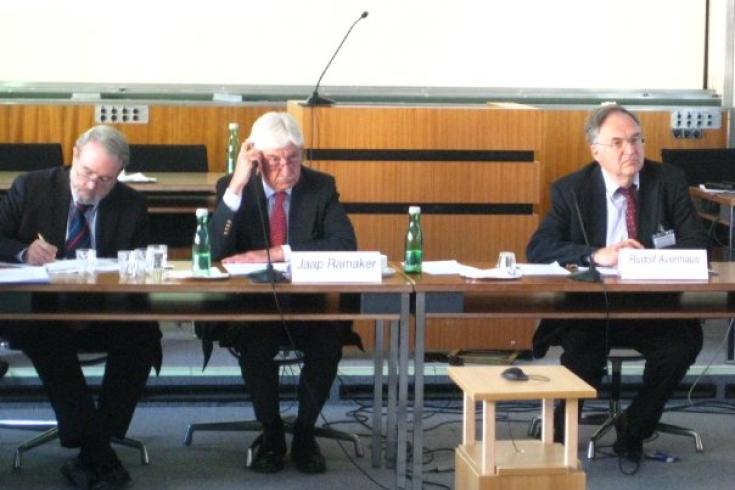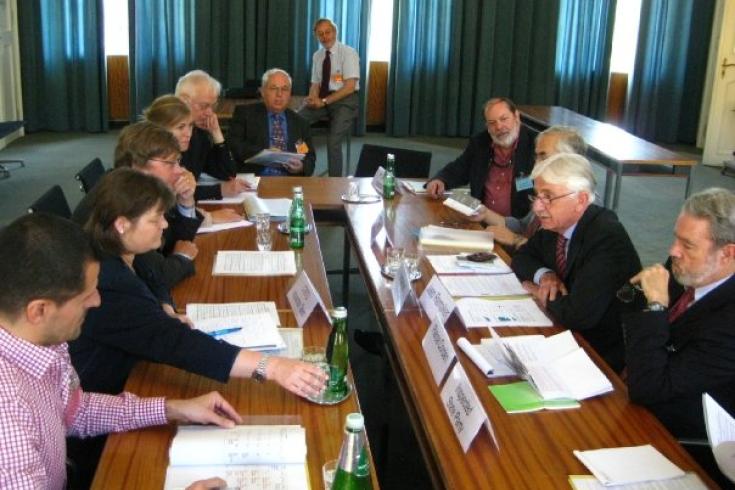Experts Meet to Learn from CTBT Negotiation Process
From 13 to 14 June 2009, the International Institute for Applied System Analysis (IIASA) and the Process of International Negotiations Program (PIN) hosted an event titled “Evaluating the Process of the [ Comprehensive Nuclear-Test-Ban Treaty ] CTBT Negotiations.” The conference took place at the historic Schloss Laxenburg at Vienna, Austria, and focused on analyzing the CTBT's negotiations in order to investigate what techniques could be utilized to promote the Treaty and other arms control agreements in the future. The event was attended by a diverse group of academics and diplomats including Ambassador Jaap Ramaker, who served as Chair of the CTBT negotiations from 1993 to 1996, and who has served as the Special Representative to Promote the Ratification Process of the CTBT since 2003. While many topics were addressed, all presenters agreed that it is currently a crucial time for the CTBT, and that the Treaty’s future will be determined largely by the United States Senate.
Jaap Ramaker: Use lessons from the past
Ramaker discussed the factors surrounding the creation of the CTBT during its negotiations: ”Because nuclear negotiations centre on national security, they are extremely difficult to complete.” Prior commitments towards ending nuclear testing, such as the Threshold Test Ban Treaty and the Partial Test Ban Treaty paved the way for the creation of the CTBT, Ramaker stated. Individual moratoria on nuclear testing and the timetable created by the UN General Assembly Resolution 5065 were vital and acted as a catalyst for the creation of the CTBT. Ramaker maintained that many of the lessons of past CTBT negotiations could be used to promote the Treaty in the future.

Pierce Corden, Ambassador Jaap Ramaker, and Rudolf Avenhaus
Johnson: The Importance of Public Opinion

Schloss Laxenburg
On-Site Inspections

The OSI inspection team led by Rebecca Johnson negotiates with the inspected state party delegation led by Ambassador Jaap Ramaker.
Use the Political Momentum for Entry into Force
Nine countries have yet to ratify the Treaty to that effect: China, Egypt, Indonesia, Iran, Israel and the United States, who have already signed the Treaty, whereas the DPRK, India and Pakistan who have not yet signed it. 180 States worldwide have signed the CTBT to date, of which 148 have ratified; see interactive map.
16 Jun 2009